The most traded commodity in the world has had quite a wild ride over the past few months. Increased U.S. production, mostly due to a shale overflow, and OPEC’s reluctance to cut output have pushed prices down and sent tremors across the investment community.
Over the last 13 months, the U.S. has stepped up its oil production by 25% from 9.5 million barrels a day (bpd) in January last year to a record 11.9 million earlier in February, according to government data.
The trade spat between the world’s largest economies, U.S. and China had traders fretting about growth prospects while November sanctions on Iranian oil and the January embargo on Venezuelan crude acted as the opposing force in the oil market.
OPEC Losing Market Share Battle Despite Forging Alliances
In an attempt to hinder North American countries’ growing clout in the oil market, the influential cartel has established a close relationship with Russia. Together with another 10 oil producing countries, the so-called OPEC+ controls more than 80% of the global crude reserves and half of the global output.
However, the extended syndicate has seen its domination in the crude market endangered over the last decade. Of the 10.3 million bpd of new oil production since 2008, the U.S. supplied 60% or 6.2 million bpd. Additionally, corporations like NuStar Energy, Buckeye Partners or Occidental Petroleum are building pipelines, storage facilities and export terminals at Gulf Coast ports. Analysts are estimating the current 2.3 million bpd of US crude exports to double in just 2 years as major transportation projects are set to free as much as 2 million bpd of oil landlocked in West Texas.
The world’s two other major oil-producing countries, Saudi Arabia and Russia, saw their production increase by 1.7 million bpd and 1.2 million bpd respectively since 2008. This has led to a fierce battle for market share that only made U.S. firms more resilient to low prices as they developed new technologies and sliced production costs. On the other hand, analysts estimate that Riyadh needs oil at $80 per barrel in order to fund its 2019 budget while Vladimir Putin has claimed that $60 per barrel suited his government’s commitments.
The organization has moved to curb the fall in crude prices in December and pledged to cut output by 1.2 million bpd for the first six months of 2019, with the largest share being attributed to OPEC, while Russia agreeing to reduce its quota by 400,000 bpd.
The effect of at first muted but as traders began pricing in a drop in Venezuelan exports and prolonged trade negotiations between the U.S. and China, so did Brent and WTI surge surged from 15-month lows. The climb in prices equals to a year to date performance of 24% for Brent and 27% for the lighter and sweeter West Texas Intermediate.
Plummeting Venezuelan Crude Exports Offer Lifeline to Canadian Oil
Venezuela’s crumbling infrastructure managed to export about 1.34 million bpd in November and fell to a 28 year low of 1.1 million bpd at the start of 2019. Analysts are expecting further declines to 900,000 bpd as early as March. The U.S. processed about 500,000 bpd of Venezuelan in 13 refineries spread across the Gulf Coast, at the end of 2018. Despite accounting for just 7% of total U.S. crude imports, the constraint had refiners push for alternatives from Mexico and Canada to fill the gap.
Canadian crude exports to its Southern neighbor jumped from 3.6 million bpd in December 2017 to hit a record 4.2 million bpd in November, latest data showed. The Canadian authorities have moved to curtail oil manufacturing in December, fearing that the heavy Western Canadian Select (WCS) was trading at a much too painful discount to WTI. Due to pipeline constraints and steep transportation costs, the price differential between WCS and WTI widened to $52 per barrel in October. The hefty discount was also exacerbated by maintenance shutdowns at U.S. refiners, like BP’s Whiting Refinery in Chicago, the largest buyer of Western Canadian crude, which went offline in September.
Transportation Projects to Spur Export Boom
The announced production cut of 8.7% or 325,000 bpd prompted a massive tightening in the differential, which hit $7 in January, the narrowest discount in a decade. In addition, the Alberta government said it will buy rail cars to move more crude by rail out of reserve-rich Western Canada. The costly transportation method has surged of late with crude-by-rail exports from Canada reaching a record high in December, according to The National Energy Board.
Earlier in February, Alberta Premier Rachel Notley announced a $3.7 billion plan to gear up crude shipments by rail to 120,000 barrels of oil per day by over the next two years, under deals with Canada’s two major railways, CN Rail and CP Rail.
A major pipeline project, Enbridge’s Line 3 is scheduled to begin operating in the next couple of years and add 370,000 barrels of export capacity. Calgary-based Enbridge has also said it plans to add a total of 350,000 bpd of capacity by using drag reducing agents and converting its Southern Lights condensate import pipeline into a crude oil export pipeline.
The ambitious Keystone XL pipeline project is still muddling its way through legal battles in Montana and Nebraska. The estimated capacity of the $8 billion project owned by TransCanada stands at 830,000 bpd and should go online by the end of 2021. The corporation announced earlier in February that is has secured commercial support for all available space of the pipeline and already commenced key pre-construction activities. The company also said it expects to get the green light for its Nebraska route by the end of March.
The oil market has seesawed over the last six months as political tensions acted as both headwinds and tailwinds to the price of the precious commodity. Oil demand is expected to rise annually by 1 million bpd. However, as previously manifested over the last decade, U.S. shale production could also climb by roughly the same amount. That would crush the cartel’s influence in the market. Separately, Canadian oil stands to gain from this clash as more transportation projects are being financed and WCS is set to flow abundantly to the South over the foreseeable future.
Garnet O. Powell, MBA, CFA is the President & CEO of Allvista Investment Management Inc., a firm that manages investment portfolios on behalf of individuals, corporations, and trusts to help them reach their investment goals. He has more than 20 years of experience in the financial markets and investing. He is also the Editor-in-Chief of the Canadian Wealth Advisors Network (CWAN) magazine. He can be reached at gpowell@allvista.ca

